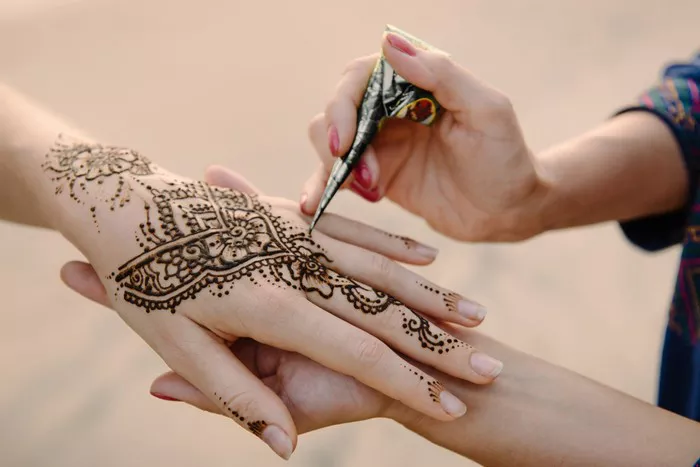History and Origin of Henna Tattoos
Henna tattoos, also known as Mehndi, have a rich cultural history dating back thousands of years. Originating in ancient Egypt and migrating to countries such as India, Pakistan, Bangladesh, and North Africa, henna has long been revered for its auspicious qualities and intricate designs. The tradition of adorning the body with henna paste, derived from the Lawsonia inermis plant, spans various cultures and holds significant symbolism.
In ancient times, henna was not only used for decorative purposes but also for its medicinal properties. Its cooling effect made it a popular remedy for headaches and fevers. Over time, henna became synonymous with celebrations and rites of passage, particularly weddings. The elaborate henna designs applied to the bride’s hands and feet symbolize beauty, fertility, and prosperity, serving as a blessing for her new journey in marriage.
Cultural Significance of Henna Tattoos
Henna tattoos play an integral role in cultural festivities, marking joyous occasions such as weddings, festivals, and religious ceremonies. In countries like India, Mehndi ceremonies are an essential part of pre-wedding rituals, where intricate henna patterns are meticulously applied to the bride’s hands and feet. These designs symbolize joy, love, and auspicious beginnings, and they are believed to ward off evil spirits while bringing blessings to the couple’s union.
Furthermore, henna tattoos are not limited to weddings but are also prominently featured in festivals like Eid and Diwali, as well as other celebrations such as birthdays and baby showers. They serve as a form of self-expression and adornment, reflecting cultural heritage and personal style. The deep-rooted significance of henna transcends borders, with its popularity spreading globally as a form of body art and cultural appreciation.
Symbolism of Henna Tattoos
Henna designs are replete with symbolism, each motif carrying its own significance and meaning. Common elements found in henna patterns include flowers, paisleys, and mandalas, each representing different aspects of life and spirituality.
Flowers, such as roses and lotuses, symbolize beauty, femininity, and purity. They are often incorporated into bridal henna designs to evoke feelings of love and happiness. Paisley motifs, also known as buta or boteh, are symbolic of fertility and prosperity, making them popular choices for auspicious occasions like weddings and childbirth. Mandalas, with their intricate geometric patterns, represent unity, harmony, and the universe’s interconnectedness, conveying a sense of spiritual enlightenment and protection.
Design Styles of Henna Tattoos
Henna tattoos encompass a diverse range of styles, each with its own distinct characteristics and cultural influences. Arabic henna designs are characterized by bold, floral patterns and intricate linework, often featuring large, central motifs and symmetrical compositions. These designs typically cover a larger area of the skin, extending from the fingertips to the forearm or even the entire hand.
In contrast, Mehndi designs originated in the Indian subcontinent, featuring finer lines and more intricate detailing. These designs often incorporate peacock motifs, mango leaves, and other traditional Indian elements, reflecting the region’s cultural heritage and aesthetic preferences. Mehndi patterns are known for their delicate beauty and symbolism, making them a popular choice for brides and festive occasions.
Application Process of Henna Tattoos
The process of applying henna tattoos is an art form in itself, requiring skill, precision, and patience. Henna paste is traditionally made by crushing dried henna leaves into a fine powder, which is then mixed with water, lemon juice, and essential oils to create a smooth, thick paste. The paste is then transferred into a cone or applicator bottle for intricate designs.
Before applying the henna paste, the skin is typically cleansed and prepped to ensure better adhesion and longevity of the design. The artist then carefully applies the paste onto the skin, using steady hands and intricate movements to create the desired patterns. Once applied, the henna paste is left to dry for several hours, during which the dye oxidizes and binds to the keratin in the skin, leaving behind a temporary stain.
Safety Tips for Henna Tattoos
While henna tattoos are generally safe, it’s essential to be mindful of the type of henna used and any potential allergens or additives. Natural henna, derived from the Lawsonia inermis plant, is generally considered safe for use on the skin and produces a reddish-brown stain. However, black henna, which contains a chemical called para-phenylenediamine (PPD), can cause severe allergic reactions and skin irritation.
To ensure a safe and enjoyable henna experience, it’s crucial to choose a reputable artist who uses high-quality, natural henna paste. Additionally, it’s essential to perform a patch test before getting a henna tattoo, especially if you have sensitive skin or allergies. Aftercare is also essential for maintaining the longevity of the tattoo, including avoiding contact with water for the first 24 hours and applying a moisturizing balm to keep the skin hydrated.
In conclusion, henna tattoos hold a deep cultural significance, symbolizing love, fertility, and prosperity across various cultures and traditions. With their intricate designs and symbolic motifs, henna tattoos serve as a timeless form of self-expression and celebration, bridging the gap between tradition and modernity in today’s multicultural world.

